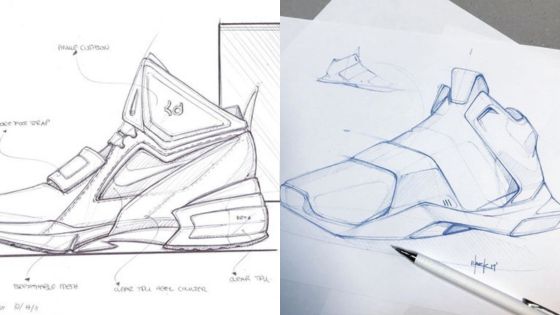Mastering perspective in landscape drawing is an essential skill for any artist who wishes to create realistic and visually appealing artwork. Perspective refers to the technique of creating the illusion of depth and distance on a two-dimensional surface. By understanding perspective, an artist can create a sense of realism in their drawings, making the viewer feel as though they are looking at a three-dimensional scene.
One of the most important aspects of perspective in landscape drawing is understanding the concept of vanishing points. A vanishing point is the point on the horizon where all parallel lines appear to converge. By placing objects in a scene according to the rules of perspective, an artist can create the illusion of depth and distance, making the viewer feel as though they are looking into the scene rather than at a flat image.
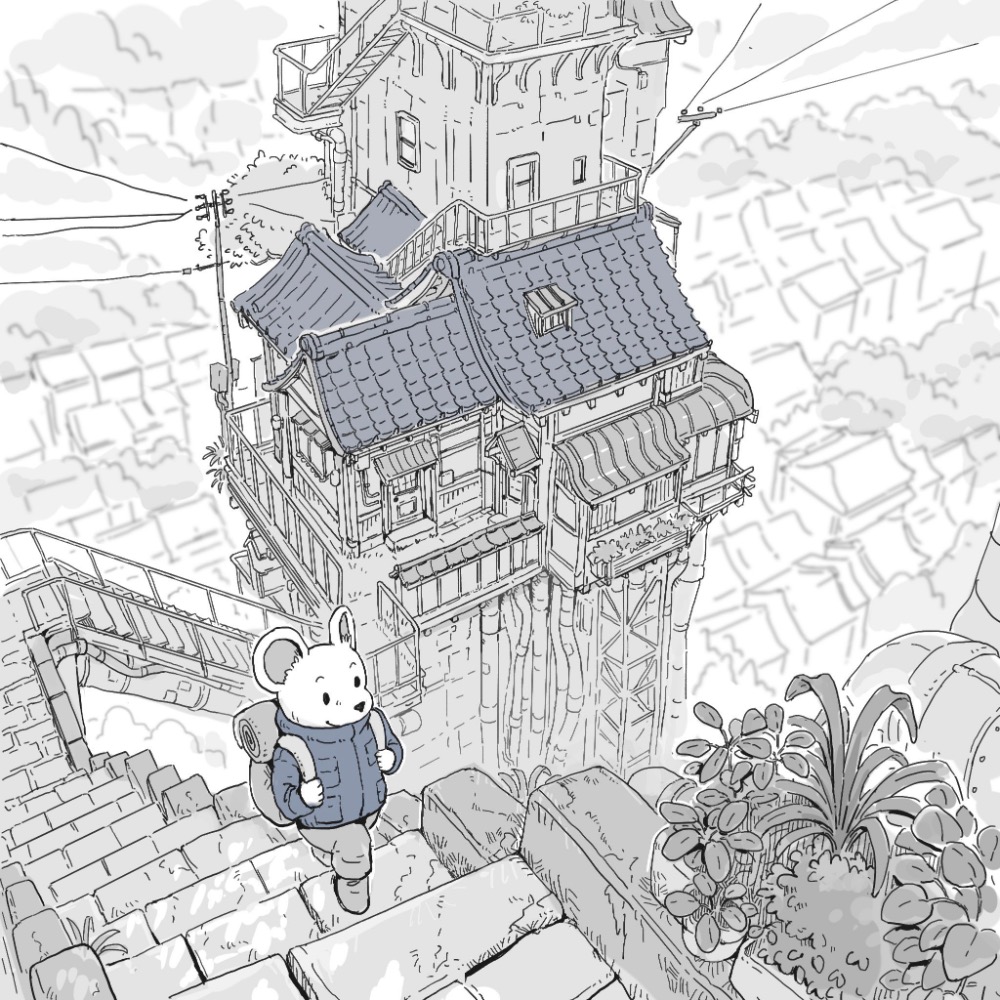
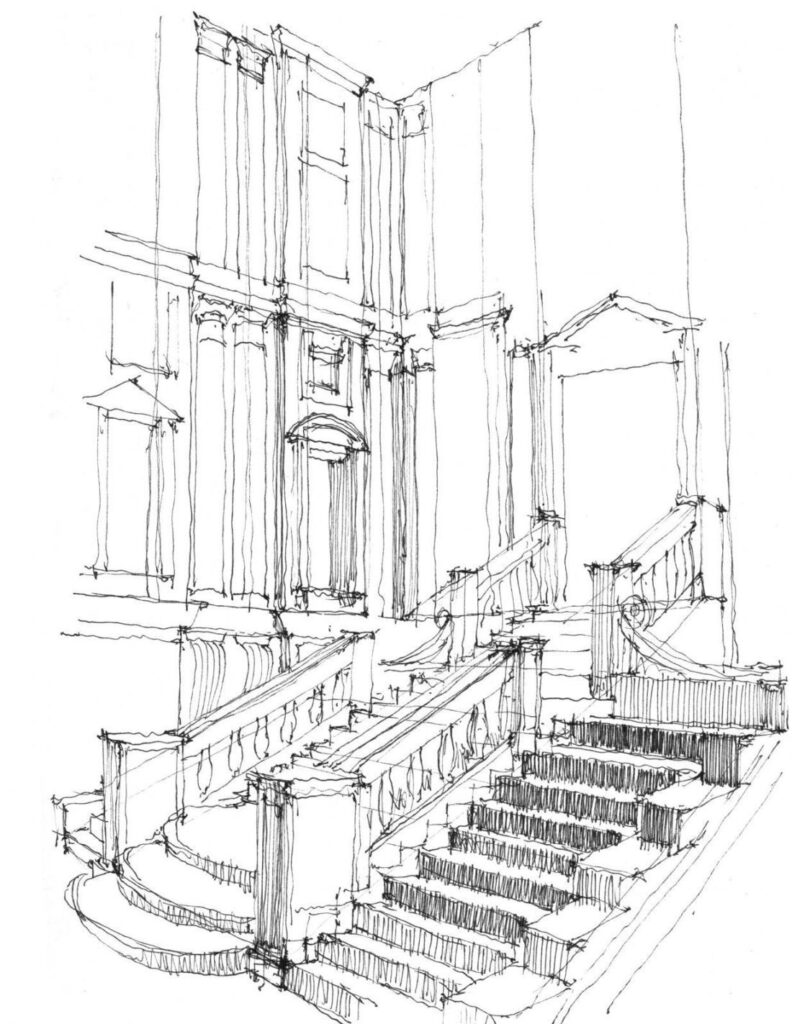
In order to master perspective in landscape drawing, it is essential to have a solid understanding of the principles of art and how they relate to perspective. This includes concepts such as composition, color theory, and value. By combining these principles with a strong understanding of perspective, an artist can create stunning landscape drawings that are both realistic and visually appealing.
Fundamentals of Perspective
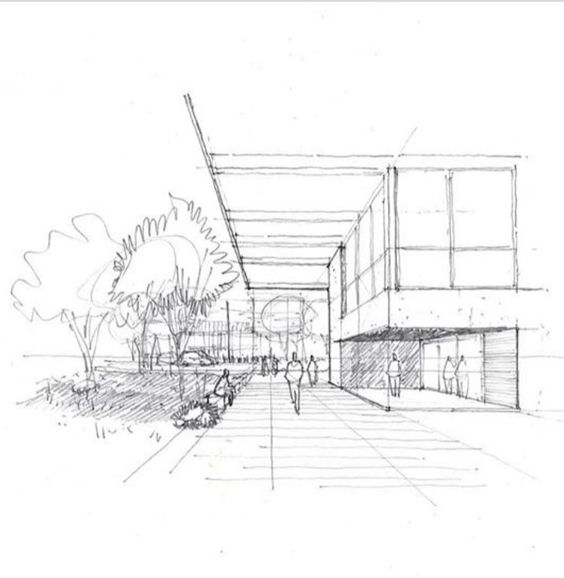
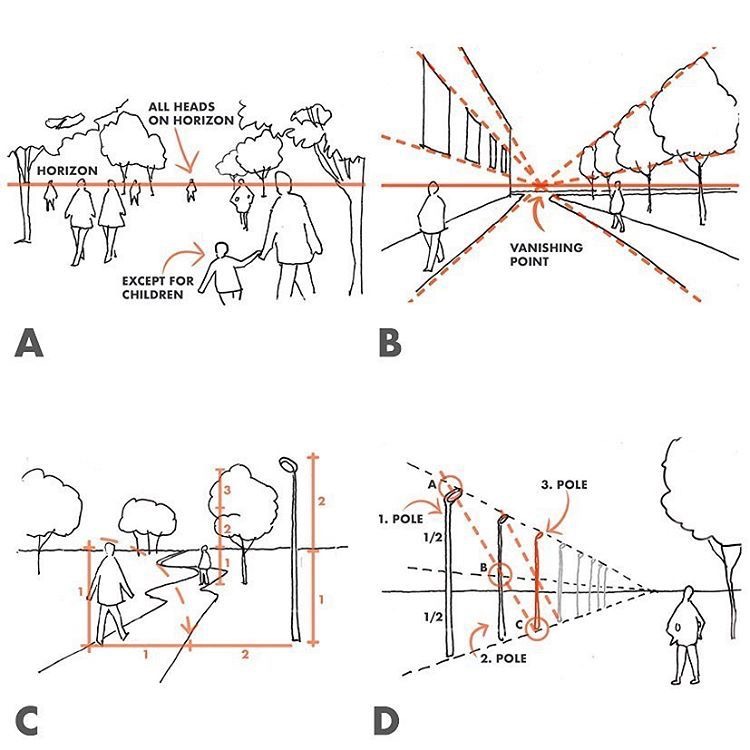
Understanding Perspective
Perspective is an essential element in landscape drawing. It is the art of representing three-dimensional objects on a two-dimensional surface. It is the technique that gives the illusion of depth and space in a drawing. Understanding perspective is crucial to creating realistic and believable landscapes.
Types of Perspective
There are three types of perspective: one-point perspective, two-point perspective, and three-point perspective. One-point perspective is used when the object is facing directly towards the viewer. Two-point perspective is used when the object is at an angle. Three-point perspective is used when the object is tilted or when the viewer is looking up or down at the object.
Role of the Horizon Line
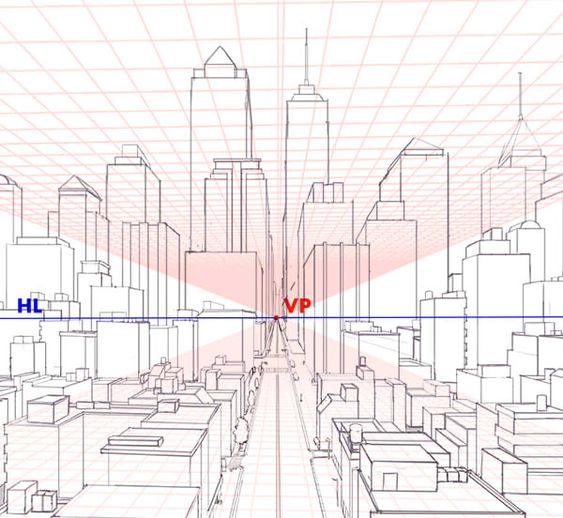
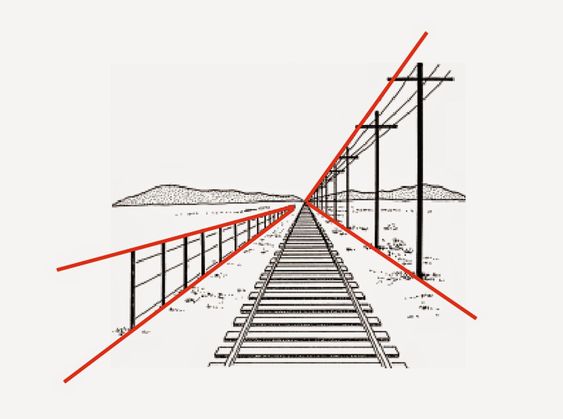
The horizon line is a horizontal line that represents the viewer’s eye level. It is the point where the sky meets the ground. The horizon line is an essential element in perspective drawing because it determines the position of the vanishing point.
Vanishing Points and Convergence
Vanishing points are the points where parallel lines appear to converge in the distance. They are used to create the illusion of depth and space in a drawing. Convergence is the process where parallel lines appear to meet at a vanishing point. The position of the vanishing point depends on the position of the horizon line and the angle of the object.
Understanding the fundamentals of perspective is crucial to creating realistic and believable landscapes. By using lines, vanishing points, and the horizon line, artists can create the illusion of depth and space in their drawings.
Setting Up Your Drawing
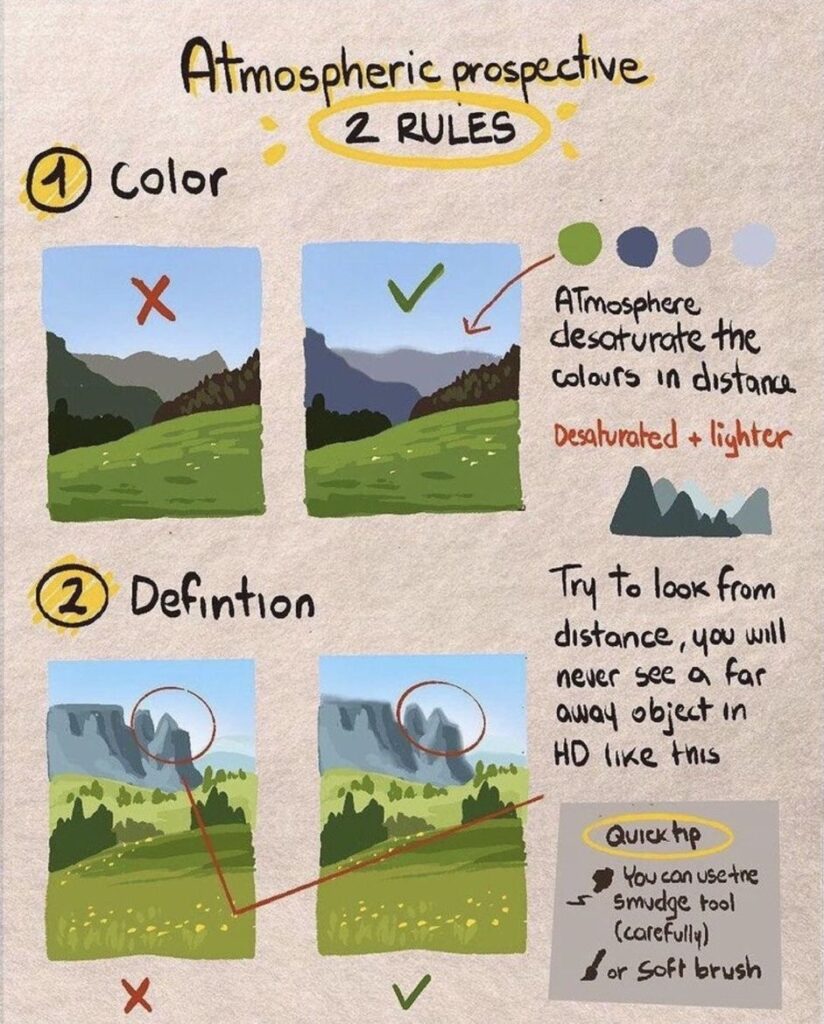
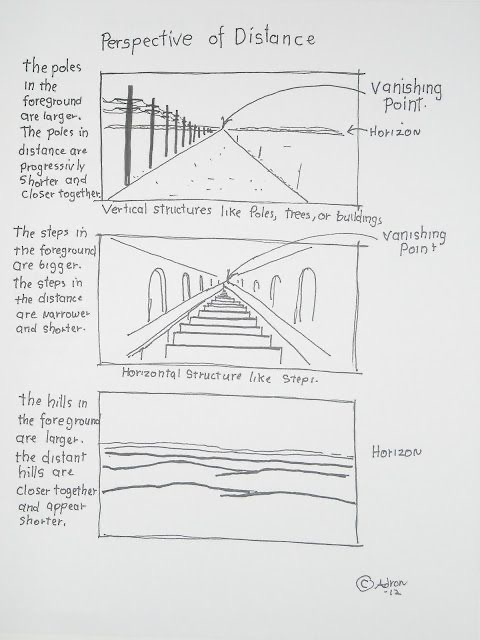
Choosing the Right Materials
Before starting a landscape drawing, it is important to choose the right materials. The choice of materials will depend on personal preferences, the level of detail required, and the desired outcome. For canvas or drawing paper, it is recommended to use high-quality materials that are acid-free and have a good tooth. A sketchbook is also a great option for practicing and experimenting with different techniques.
When it comes to pencils, it is recommended to use a range of grades from soft to hard, such as 2B, HB, and 2H. This will allow for a wide range of values and textures. An eraser is also an essential tool for correcting mistakes or adjusting values.
Establishing the Viewpoint
Establishing the viewpoint is crucial in landscape drawing. It is important to choose a viewpoint that will showcase the desired elements of the landscape. This can be achieved by taking reference photos or by sketching different viewpoints on location.
Once the viewpoint is established, it is important to use a ruler to measure the angles and distances of the landscape elements. This will help to create an accurate perspective and ensure that the drawing is proportional.
Sketching the Composition
Sketching the composition is the next step in setting up a landscape drawing. It is recommended to start with a loose sketch to establish the basic shapes and proportions. This can be done with light lines and a soft pencil.
Once the basic composition is established, it is important to refine the details and add texture and value. This can be achieved by using a range of pencils and techniques such as hatching, cross-hatching, and stippling.
By following these steps, the artist can set up a strong foundation for a successful landscape drawing.
Creating Depth and Dimension

Linear Perspective Techniques
Linear perspective is a fundamental technique for creating the illusion of depth and dimension in landscape drawing. It involves using a series of lines and vanishing points to create the illusion of three-dimensional space on a two-dimensional surface. One-point perspective, two-point perspective, and three-point perspective are the most commonly used techniques for creating linear perspective in landscape drawing.
Atmospheric Perspective
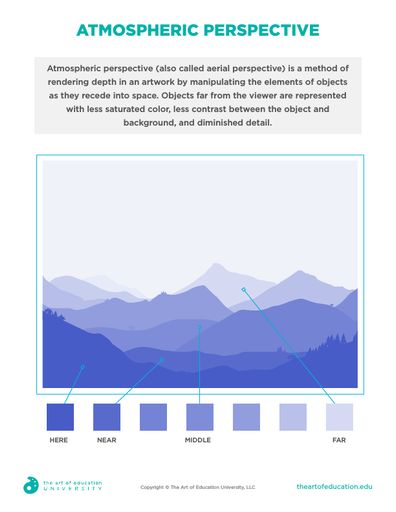
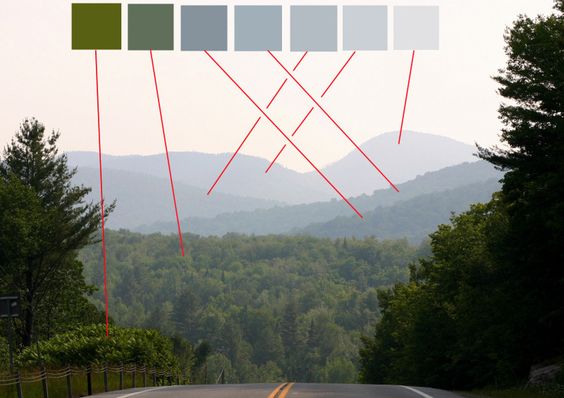
Atmospheric perspective is another technique for creating the illusion of depth in landscape drawing. It involves using color and value changes to create the illusion of depth and distance. This technique is based on the fact that objects appear less distinct and less saturated as they move farther away from the viewer. By using lighter, cooler colors and softer edges for distant objects, artists can create the illusion of depth and distance.
Using Light and Shadow
Light and shadow are essential elements in landscape drawing. They help to create the illusion of depth and dimension by indicating the position of objects in relation to the light source. By using light and shadow to create contrast and depth, artists can create a more realistic and convincing illusion of three-dimensional space.
Manipulating Color and Value
Color and value are important tools for creating the illusion of depth and dimension in landscape drawing. By manipulating color and value changes, artists can create the illusion of distance and depth. Warm colors tend to advance towards the viewer, while cool colors tend to recede into the background. By using lighter, cooler colors for distant objects and darker, warmer colors for closer objects, artists can create the illusion of depth and distance.
In conclusion, creating depth and dimension in landscape drawing is essential for creating a realistic and convincing illusion of three-dimensional space. By using linear perspective techniques, atmospheric perspective, light and shadow, and color and value changes, artists can create a more convincing and engaging landscape drawing.
Drawing Natural and Built Environments
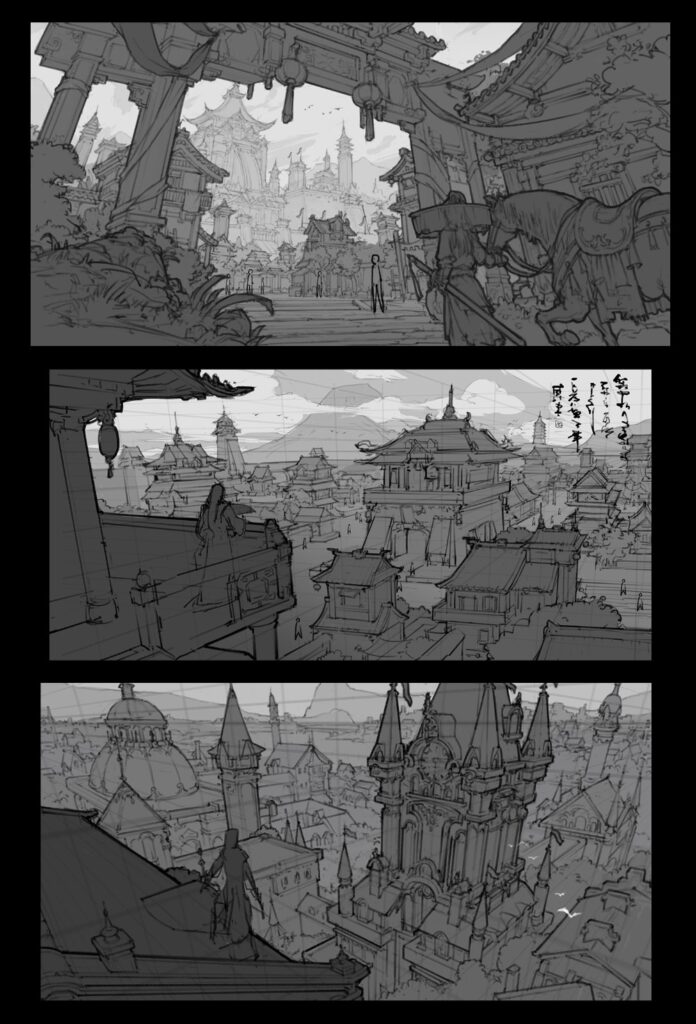
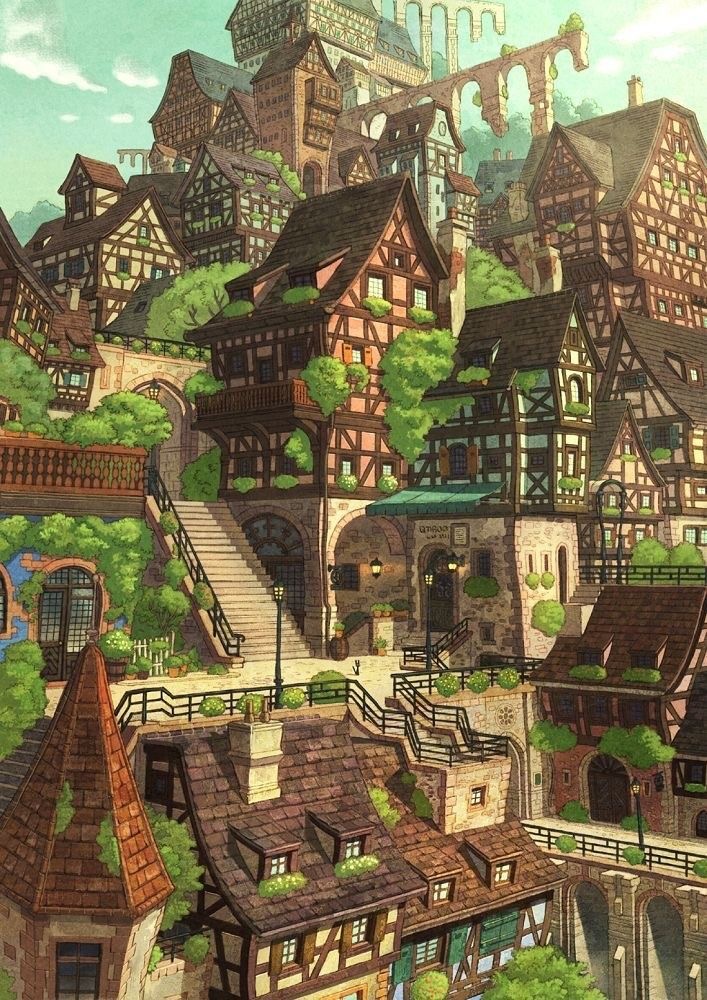
Capturing Landscapes
Drawing landscapes is an essential skill for any artist, particularly for those interested in landscape drawing. A good landscape drawing should convey the beauty and majesty of the natural world. To achieve this, the artist must pay close attention to the details of the landscape, such as the shape of the hills, the texture of the trees, and the movement of the clouds.
One effective technique for capturing landscapes is to use perspective. By using perspective, the artist can create the illusion of depth and distance, which is essential for capturing the vastness of the natural world. Another useful technique is to use shading to create a sense of light and shadow, which can add depth and dimension to the landscape.
Depicting Buildings and Cityscapes
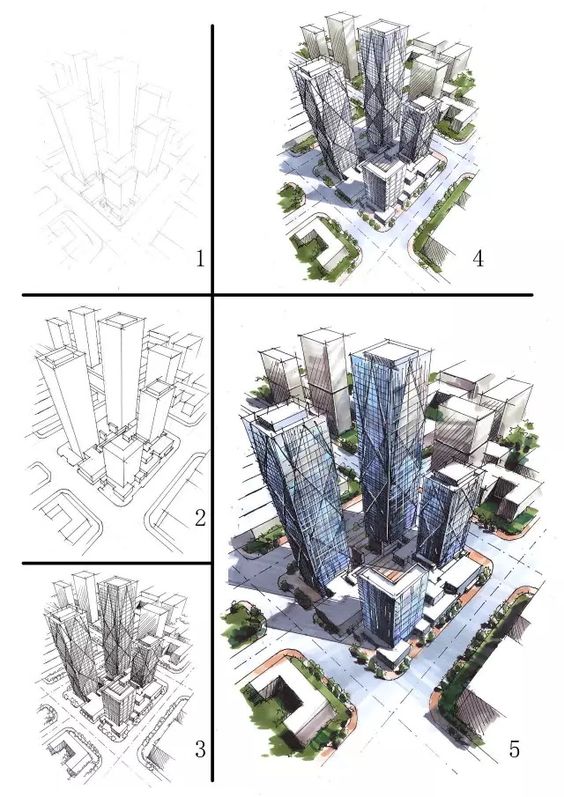
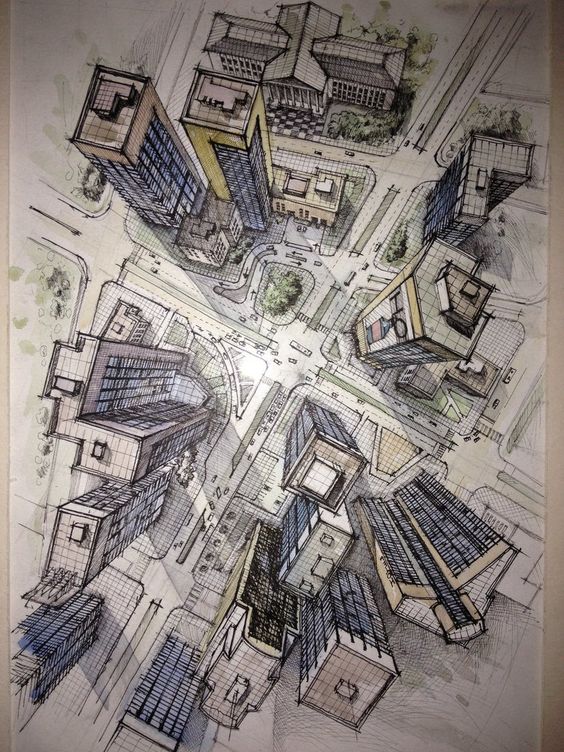
Drawing buildings and cityscapes is a challenging but rewarding task. To create a convincing drawing, the artist must pay close attention to the details of the buildings, such as the shape of the windows, the texture of the walls, and the placement of the doors. The artist must also pay attention to the surrounding environment, such as the trees, hills, and sky.
One effective technique for depicting buildings and cityscapes is to use perspective. By using perspective, the artist can create the illusion of depth and distance, which is essential for capturing the scale and grandeur of the cityscape. Another useful technique is to use shading to create a sense of light and shadow, which can add depth and dimension to the buildings.
Integrating Nature and Architecture
Integrating nature and architecture is an essential aspect of landscape drawing. To create a convincing drawing, the artist must pay close attention to the relationship between the natural environment and the built environment. The artist must also pay attention to the details of the buildings and the natural elements, such as the trees, hills, and sky
One effective technique for integrating nature and architecture is to use perspective. By using perspective, the artist can create the illusion of depth and distance, which is essential for capturing the relationship between the natural environment and the built environment. Another useful technique is to use shading to create a sense of light and shadow, which can add depth and dimension to the natural elements and the buildings.
In conclusion, drawing natural and built environments is a challenging but rewarding task. By using perspective, shading, and paying close attention to the details of the landscape, buildings, and natural elements, the artist can create a convincing and beautiful drawing that captures the majesty and grandeur of the natural world and the built environment.
Advanced Perspective Techniques
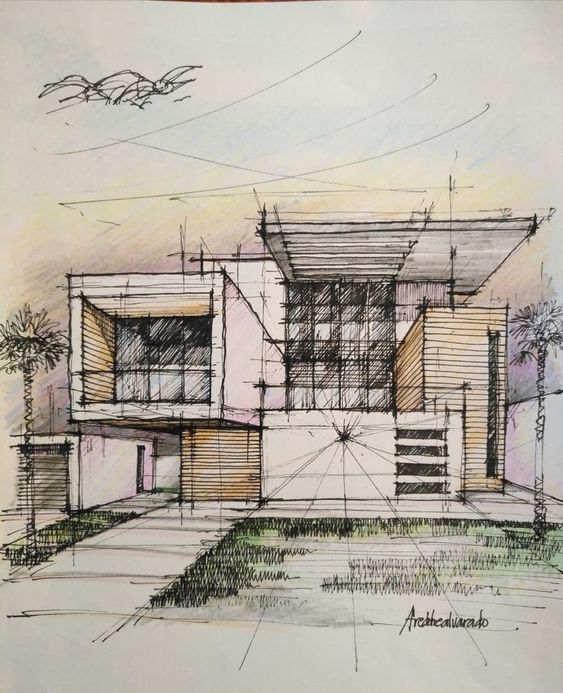
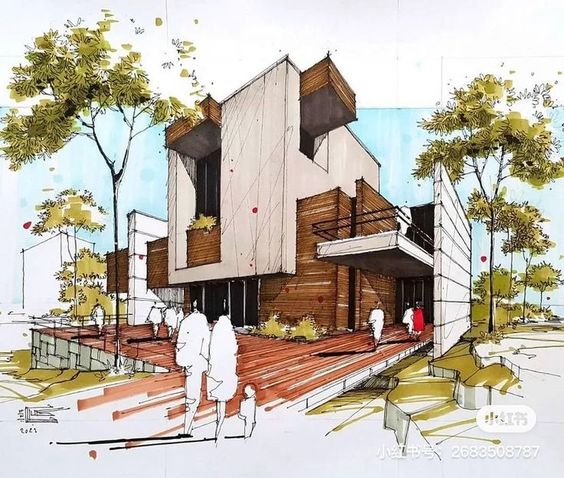
Multi-Point Perspective
Multi-point perspective is a technique that is used to create the illusion of depth in a drawing by using multiple vanishing points. This technique is particularly useful when drawing complex forms and structures such as buildings or landscapes.
When using multi-point perspective, it is important to keep in mind the proportions of the objects being drawn. This will ensure that the final drawing looks realistic and visually appealing. It is also important to consider the lighting and shadows in the scene, as these can greatly affect the overall composition of the drawing.
Complex Forms and Structures
Drawing complex forms and structures can be a challenge, but with the right perspective techniques, it can be made easier. One technique that can be used is the use of grids and guidelines to help establish the correct proportions and perspective.
Another technique is to break down the form or structure into smaller, simpler shapes, and then gradually build up the details. This can help to ensure that the final drawing looks accurate and visually appealing.
Creating a Visual Narrative
When drawing landscapes, it is important to consider the overall narrative or story that the drawing is trying to convey. This can be achieved by using perspective techniques to create a sense of depth and distance, as well as by carefully choosing the composition of the scene.
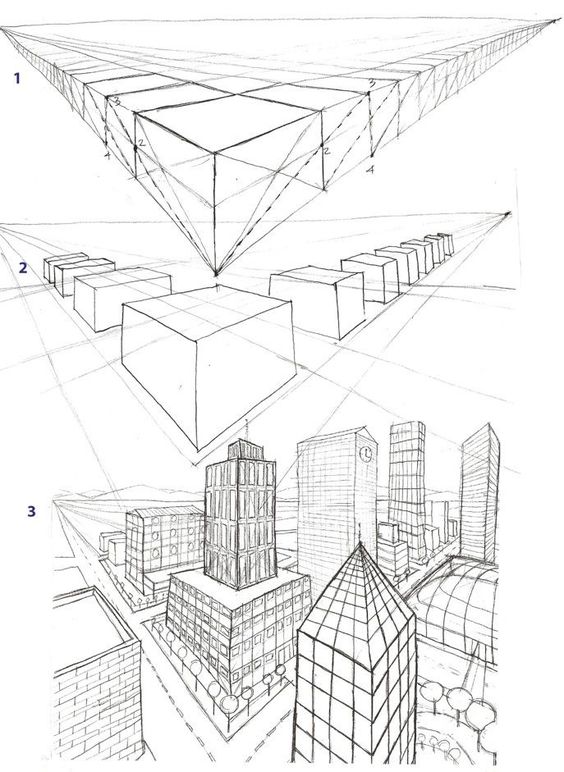
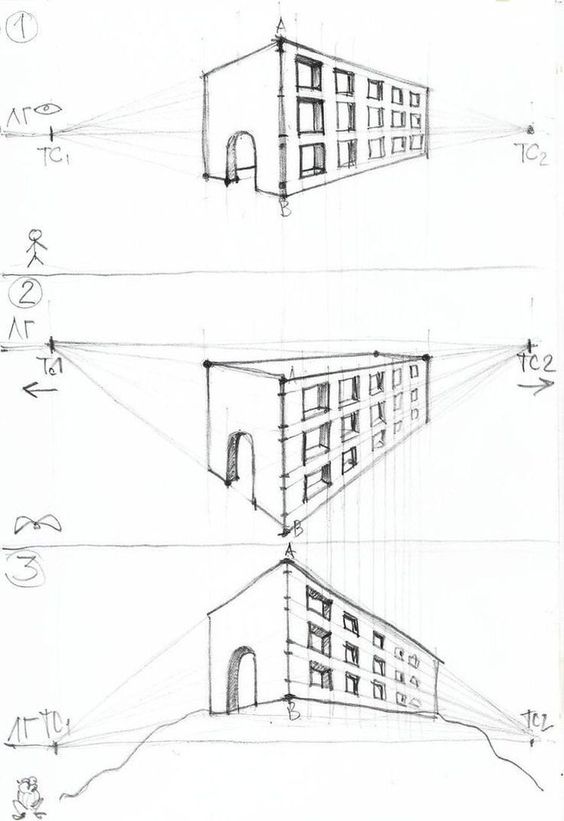
By using techniques such as atmospheric perspective, where objects in the distance appear less detailed and more muted in color, or by using foreground objects to frame the scene, it is possible to create a more compelling and visually interesting landscape drawing.
Overall, mastering advanced perspective techniques is essential for creating realistic and visually appealing landscape drawings. By understanding the principles of multi-point perspective, complex forms and structures, and creating a visual narrative, artists can take their drawings to the next level and create truly stunning works of art.
Practical Applications and Exercises

Step-by-Step Drawing Guide
To master perspective in landscape drawing, it is important to start with the basics. One of the most important aspects of perspective is understanding the concept of vanishing points. The vanishing point is the point on the horizon where all parallel lines appear to converge. In landscape drawing, this point is often located at the horizon line.
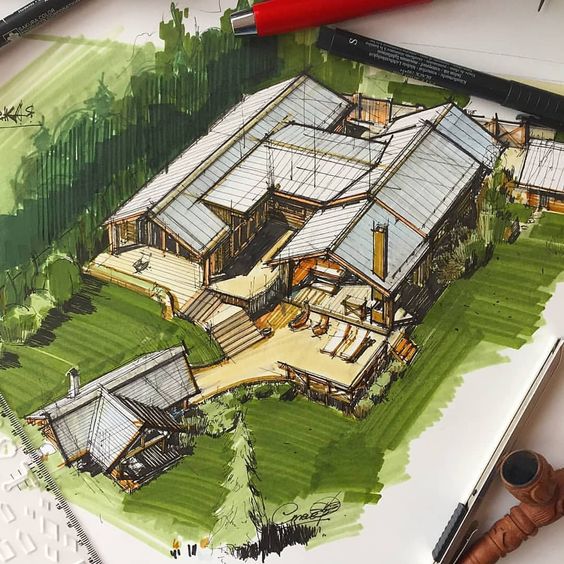
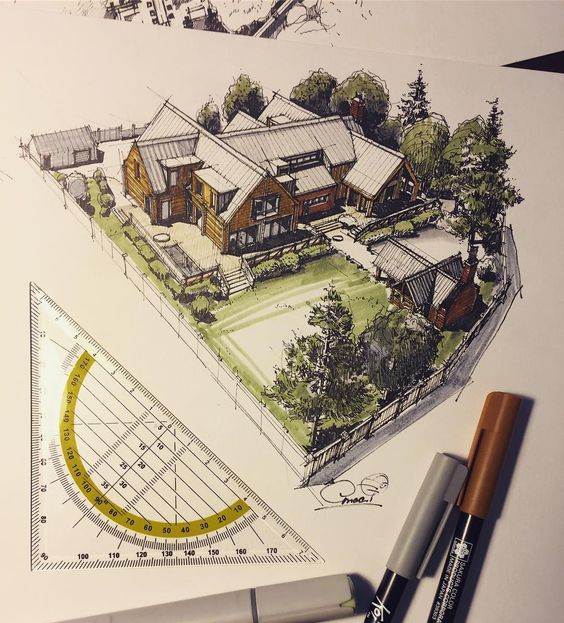
To practice drawing using vanishing points, start by drawing a simple landscape scene with a horizon line and a few objects in the foreground, middle ground, and background. Then, draw lines from each object towards the vanishing point. This will create the illusion of depth and distance in your drawing.
Another important technique in perspective drawing is foreshortening. This is when an object appears shorter or longer than it actually is because of its position in space. To practice foreshortening, try drawing a simple object, such as a cube or sphere, from different angles.
Practice Projects
Once you have mastered the basics of perspective, it is important to practice your skills. One way to do this is by creating a series of landscape drawings using different techniques and perspectives.
For example, you could create a series of drawings using one-point perspective, two-point perspective, and three-point perspective. You could also experiment with different drawing pencils and erasers to achieve different effects.
Evaluating Your Work
To improve your artistic skills, it is important to evaluate your work. This can be done by comparing your drawings to photographs or real-life scenes, and looking for areas where you can improve.
It is also helpful to get feedback from others, such as art teachers or other artists. They can offer constructive criticism and provide tips for improvement.
In conclusion, mastering perspective in landscape drawing takes practice, technique, and observation. By following a step-by-step guide, practicing with different projects, and evaluating your work, you can improve your artistic skills and create stunning landscape drawings.
Historical Context and Influences
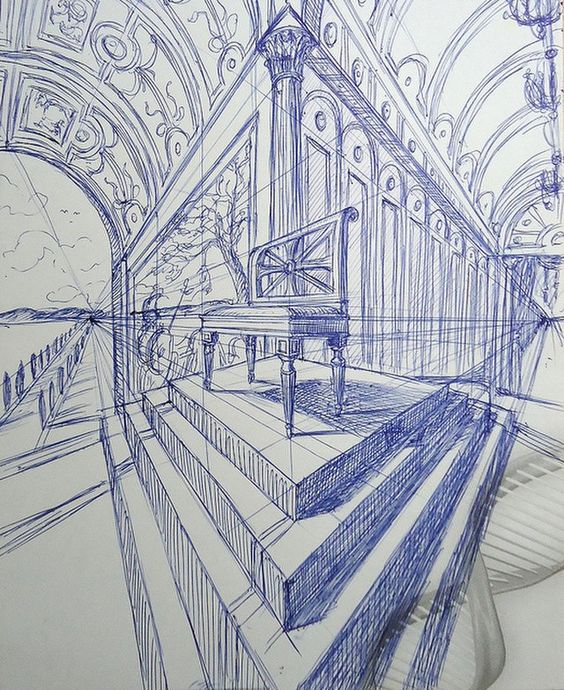
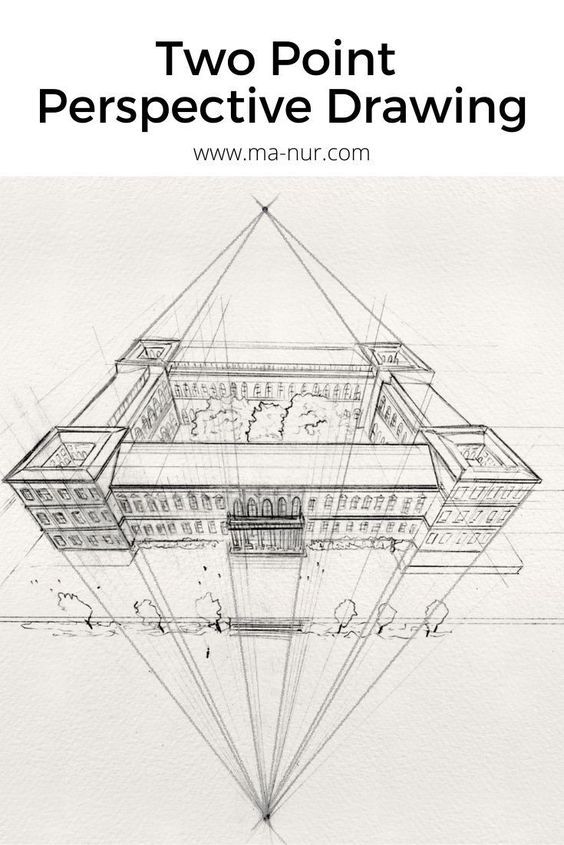
The Renaissance and Perspective
The Renaissance was a pivotal period in the history of art, marked by a renewed interest in classical antiquity and a desire to represent the world more realistically. One of the key developments of this period was the use of perspective, a technique that allowed artists to create the illusion of depth and space on a two-dimensional surface.
Filippo Brunelleschi’s Contributions

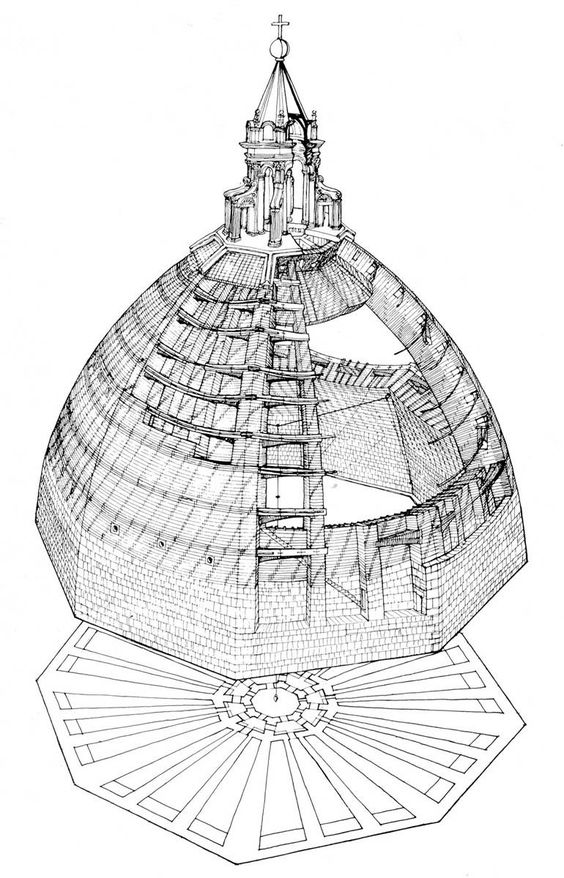
Filippo Brunelleschi, a Florentine architect and engineer, is often credited with developing the rules of linear perspective. His experiments with mirrors and lenses led him to discover the principles of vanishing points and horizons, which he used to create the illusion of depth in his paintings and architectural designs.
Modern Interpretations of Perspective
While the rules of linear perspective have remained largely unchanged since the Renaissance, artists today have developed a range of new techniques for creating the illusion of depth and space. Some artists use non-linear or distorted perspectives to create a sense of movement or disorientation, while others use digital tools to create three-dimensional environments in virtual space.
In conclusion, the use of perspective in landscape drawing has a rich history and continues to evolve with new technologies and artistic approaches. By understanding the historical context and influences of perspective, artists can better master this fundamental technique and create more compelling and realistic landscapes.
Final Thoughts
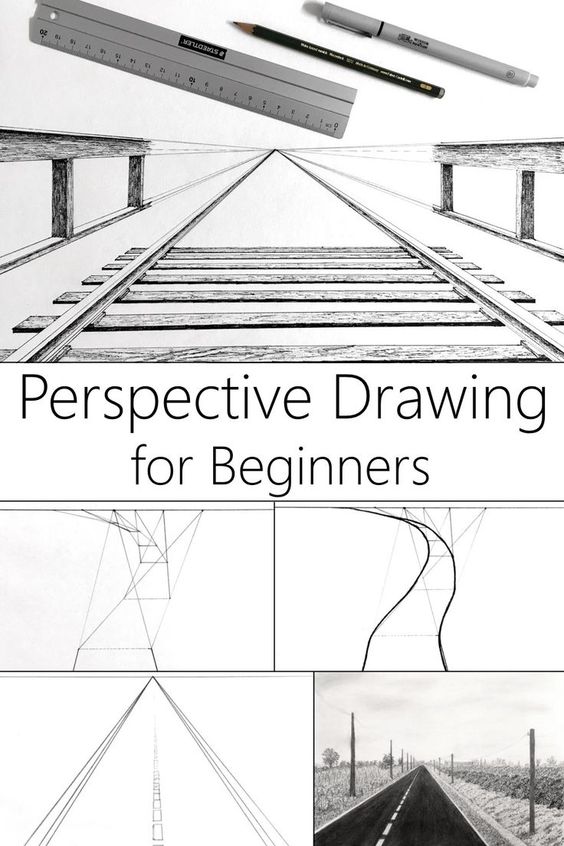
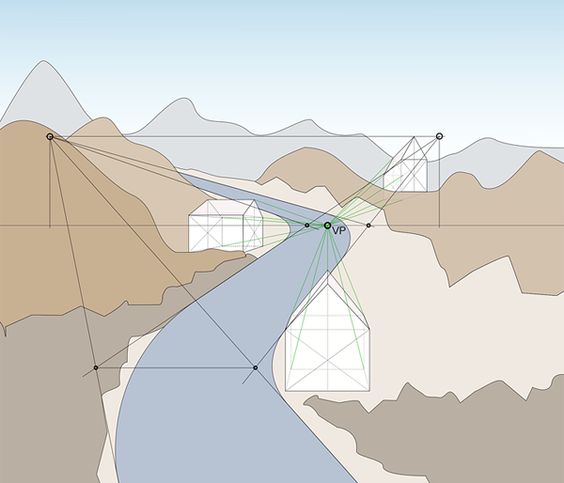
When it comes to mastering perspective in landscape drawing, there are a few key takeaways to keep in mind. First and foremost, composition is key. A well-composed landscape drawing can draw the viewer in and create an immersive experience that feels almost like reality.
But composition alone is not enough. To truly capture the emotion of a landscape and bring it to life on the page, an artist must also consider the use of color, light, and shadow. By carefully selecting the right colors and shading techniques, an artist can create a painting that evokes a specific mood or feeling.
Of course, mastering perspective in landscape drawing is not something that can be achieved overnight. It takes practice, patience, and a willingness to experiment with different techniques and approaches. But with dedication and hard work, any artist can learn to create stunning landscape drawings that capture the beauty and complexity of the natural world.
In the end, the key to success in landscape drawing is to never stop learning and growing as an artist. By studying the works of other artists, experimenting with new techniques, and pushing the boundaries of what is possible, any artist can create truly breathtaking works of art that inspire and captivate viewers.
Frequently Asked Questions
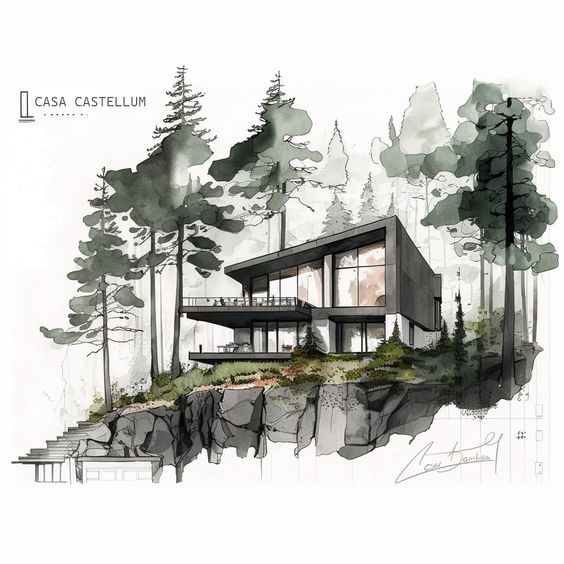
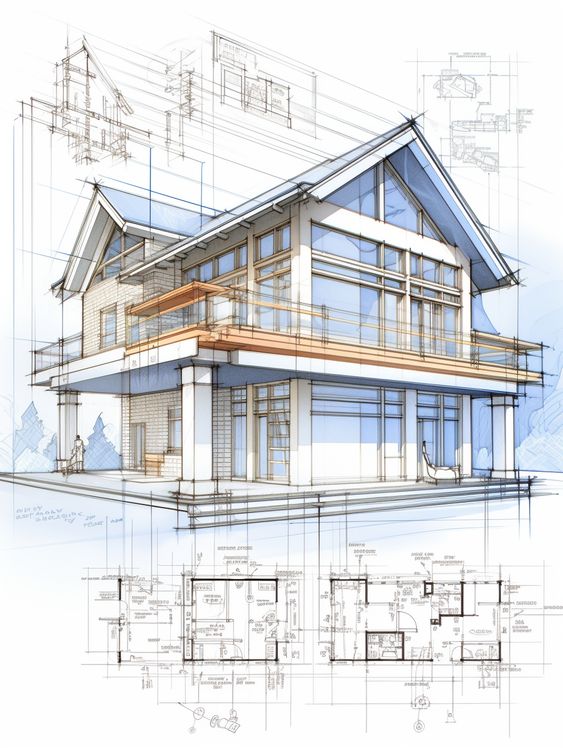
What are the basic principles of perspective in landscape drawing?
The basic principles of perspective in landscape drawing involve creating the illusion of depth and space on a two-dimensional surface. This is achieved by using techniques such as vanishing points, horizon lines, and converging lines to create the appearance of distance and proportion.
How do you draw a two-point perspective landscape?
To draw a two-point perspective landscape, you must first determine the location of two vanishing points on the horizon line. These points will be used to create the illusion of depth and distance in the drawing. Next, draw lines from the vanishing points to the edges of the paper, creating a grid of converging lines. Finally, draw the landscape elements, such as trees, buildings, and mountains, using the converging lines as a guide.
What techniques can beginners use to learn perspective in landscape art?
Beginners can use a variety of techniques to learn perspective in landscape art, including practicing drawing simple geometric shapes in perspective, studying photographs and other reference materials, and using perspective grids and other tools to aid in the drawing process.
How can you accurately depict depth in a landscape drawing?
To accurately depict depth in a landscape drawing, it is important to use techniques such as overlapping, atmospheric perspective, and scale to create the illusion of distance and space. This involves carefully considering the placement and size of objects in the drawing, as well as the use of shading and other techniques to create depth and dimension.
What is the difference between one-point and two-point perspective in landscapes?
One-point perspective involves creating the illusion of depth and space using a single vanishing point on the horizon line. Two-point perspective, on the other hand, uses two vanishing points to create the illusion of depth and space. Two-point perspective is often used in landscape drawing to create the appearance of distance and proportion.
What are some common mistakes to avoid when drawing perspective in landscapes?
Some common mistakes to avoid when drawing perspective in landscapes include failing to use vanishing points or horizon lines, drawing objects that are too large or too small in relation to one another, and failing to consider the placement and size of objects in the drawing. It is also important to avoid exaggerating or distorting the perspective in the drawing, as this can result in an unrealistic or confusing image.
- 3.9Kshares
- Facebook0
- Pinterest3.9K
- Twitter0
- Reddit0
